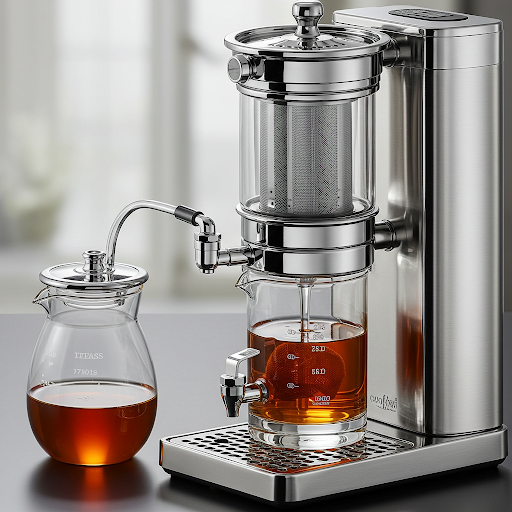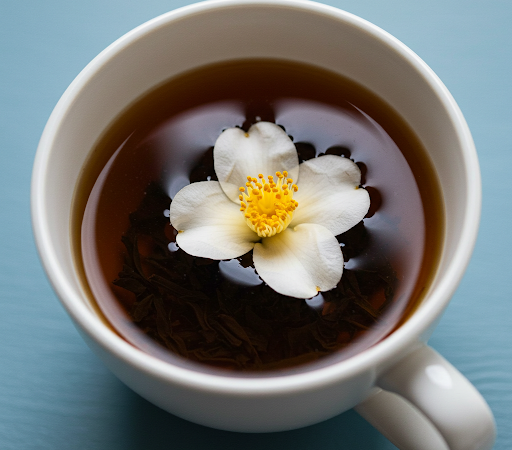
Understanding Light Flavored Black Teas
Light flavored black teas are a distinctive category within the vast world of tea, known for their nuanced flavor profiles and delicate aromas. Unlike their more robust counterparts, these teas present a gentler taste experience, often characterized by subtle floral, fruity, or citrus notes. This refinement is largely due to the specific growing conditions and processing techniques applied to the tea leaves. Originating from regions renowned for their diverse climates and elevations, light flavored black teas, such as Darjeeling and Ceylon, exhibit unique characteristics that differentiate them from traditional black teas.
Darjeeling tea, often referred to as the “Champagne of teas,” is cultivated in the foothills of the Himalayas. The elevation, climate, and soil conditions contribute to its light body and complex flavor spectrum, featuring hints of muscatel and a nuanced astringency. The production process involves minimal oxidation, which maintains the inherent freshness of the leaves and delivers the tea’s aromatic profile. Similarly, Ceylon tea, produced in Sri Lanka, is known for its bright and brisk flavor. Ceylon black teas often embody lively citrus notes, making them refreshing and suitable for both hot and iced preparations.
The lightness of these teas can also be attributed to the harvesting methods employed. The first flush of leaves, typically picked in early spring, yields a tender and aromatic brew, as the young leaves and buds are rich in polyphenols while still retaining their delicate essence. This stand in contrast to more robust black teas, which often utilize mature leaves that produce a stronger flavor. By understanding the cultivation and processing techniques behind light flavored black teas, one can appreciate their unique position in the tea hierarchy, paving the way for more informed brewing practices.
Mastering Water Temperature and Steeping Time
In the delicate process of brewing light flavored black teas, two critical factors come into play: water temperature and steeping time. The correct application of these elements can significantly impact the overall flavor profile, allowing for a superior tasting experience. For light black teas, water temperature is generally recommended to be between 190°F to 200°F (88°C to 93°C). This range is optimal as it provides sufficient heat to extract essential flavors without instigating the release of unwanted bitterness.
Utilizing water that is too hot can lead to an overpowering extraction of tannins, resulting in a brew that may taste astringent. Conversely, water that falls below the ideal temperature may yield weak and underwhelming flavors. Understanding the nuances of each type of light flavored black tea is pivotal; for example, teas such as Darjeeling or Nilgiri may thrive at slightly lower temperatures to preserve their floral notes, whereas Assam teas may benefit from the upper limit of the temperature range to enhance their maltiness.
Equally important as temperature is the steeping time, which typically ranges from 2 to 4 minutes, depending on the tea variety and personal taste preferences. For instance, lighter cultivars like second flush Darjeeling are best steeped for around 2 to 3 minutes, while heartier varieties can endure the full 4-minute steeping time. To achieve the ideal balance, it is advisable to experiment with different steeping durations, as individual palate preferences will vary. Observing the tea’s color and aroma during this process can be effective indicators of when it’s optimal to remove the leaves.
In mastering these techniques, one can unlock the full spectrum of flavors inherent in light flavored black teas, allowing their subtleties to shine through. With careful attention to both temperature and steeping time, the art of brewing can reach a level of perfection that transforms each cup into a delightful experience.
Tips and Tricks for Perfect Brews
Brewing light flavored black tea is an art that can be mastered with a few essential tips and tricks. First and foremost, measuring the tea leaves accurately is crucial for obtaining the desired flavor. A general guideline is to use one teaspoon of loose tea leaves per cup of water, but this can vary based on personal preference and the specific tea being brewed. It’s advisable to start with this measurement and adjust according to taste, as some may prefer a stronger infusion while others may enjoy a milder cup.
Next, steeping parameters play a vital role in creating the perfect brew. Light flavored black teas generally benefit from shorter steeping times to preserve their delicate flavors. A steeping time of 2 to 4 minutes is recommended, depending on the leaves and desired strength. Water temperature is equally important; a lower temperature of around 190°F (88°C) is often best to avoid bitterness, which can easily overshadow the nuanced flavors that light black teas offer.
Moreover, experimenting with multiple infusions can elevate the tasting experience. Many light flavored black teas can be steeped multiple times, with each infusion providing a different facet of flavor. Adjusting the steeping time slightly for each subsequent infusion allows enthusiasts to discover the tea’s evolving characteristics.
Common mistakes include using water that is too hot, steeping for too long, or not using enough tea leaves. To enhance the brewing experience, ensure that the tools, such as tea kettles and cups, are clean to avoid unwanted flavors, and always start with fresh, cold water. By following these practical tips and being mindful of personal preferences, anyone can brew a perfect cup of light flavored black tea that is both enjoyable and refreshing.

